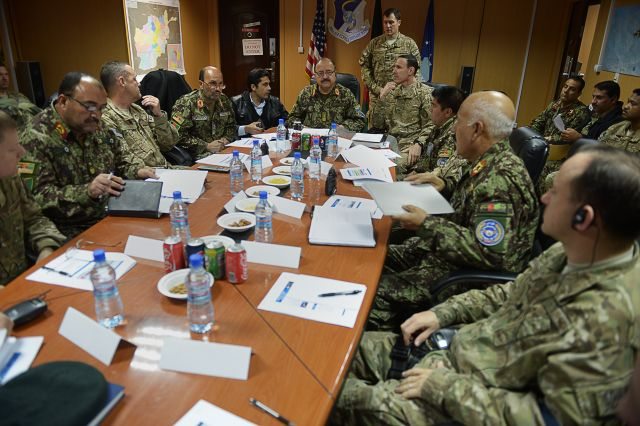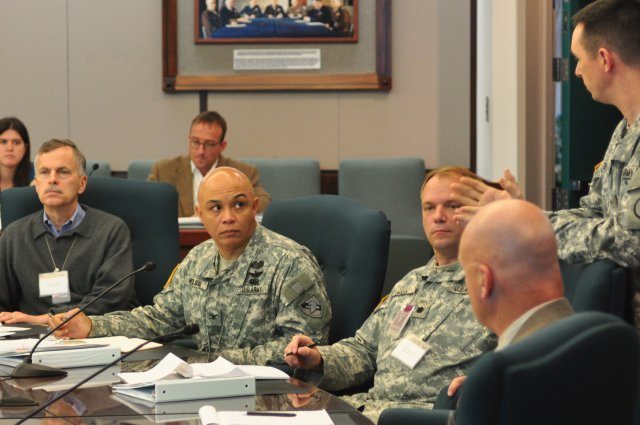Maj. Gen. Abdul Wahab Wardak, commander of the Afghan air force, and Brig. Gen. Steven Shepro, commander of NATO Air Training Command-Afghanistan, signed the first-ever combined strategy into effect at a Nov. 28 ceremony at the NATC-A headquarters at the Kabul International Airport here.
All three Wings and key leaders witnessed the ceremony. The 54-page strategic flightplan guides both commands to execute a jointly developed decree of vision, goals and key tasks, with milestones focused on 2012-2013. The ceremony capped a three-month bottom-up planning effort across the groups, Afghan air wings, AAF headquarters, NATC-A and the 438 Air Expeditionary Wing staff.
“This is for everyone — each function is specifically identified,” said Wahab, among both AAF and NATC-A headquarters staffs, with the AAF wings joining by video teleconference. “This is also a plan with a timeline. By the end of 2013, we should accomplish these goals.”
The strategy prioritizes efforts along key transitional and operational goals:
- A strong, professional Afghan Air Force that successfully leads its missions and personnel
- Effective AAF resource management and stewardship
- A culture of safe and effective aviation, maintenance and support
- Afghan planned, led, and coordinated operations that impact 2013 fighting season victories
“Our combined strategy initiative not only provides a clear roadmap out to 2013,” explained Lt. Col. Kouji Gillis, NATC-A strategist, “the initiative provided the Afghan air force members insight to our strategy-development process, for their own future independent planning”.
The document is the culmination of a bottom-up approach to organizational strategy, told Gillis. NATO mentors and Afghan leaders across each Afghan air force function, ranging from personnel to logistics, partnered to evaluate risks, assumptions, constraints, and develop the goals that feed into larger, over-arching guidance.
“We are doing many great things”, explained Shepro. “It is important that we do the right things, and on the same sheet of music. This precedent provides joint direction, cohesion and motivation to build needed airpower capability to succeed in next year’s fight, and to develop capacity of the Afghan air force’s most important asset — its airmen — to sustain that success.”










